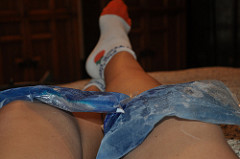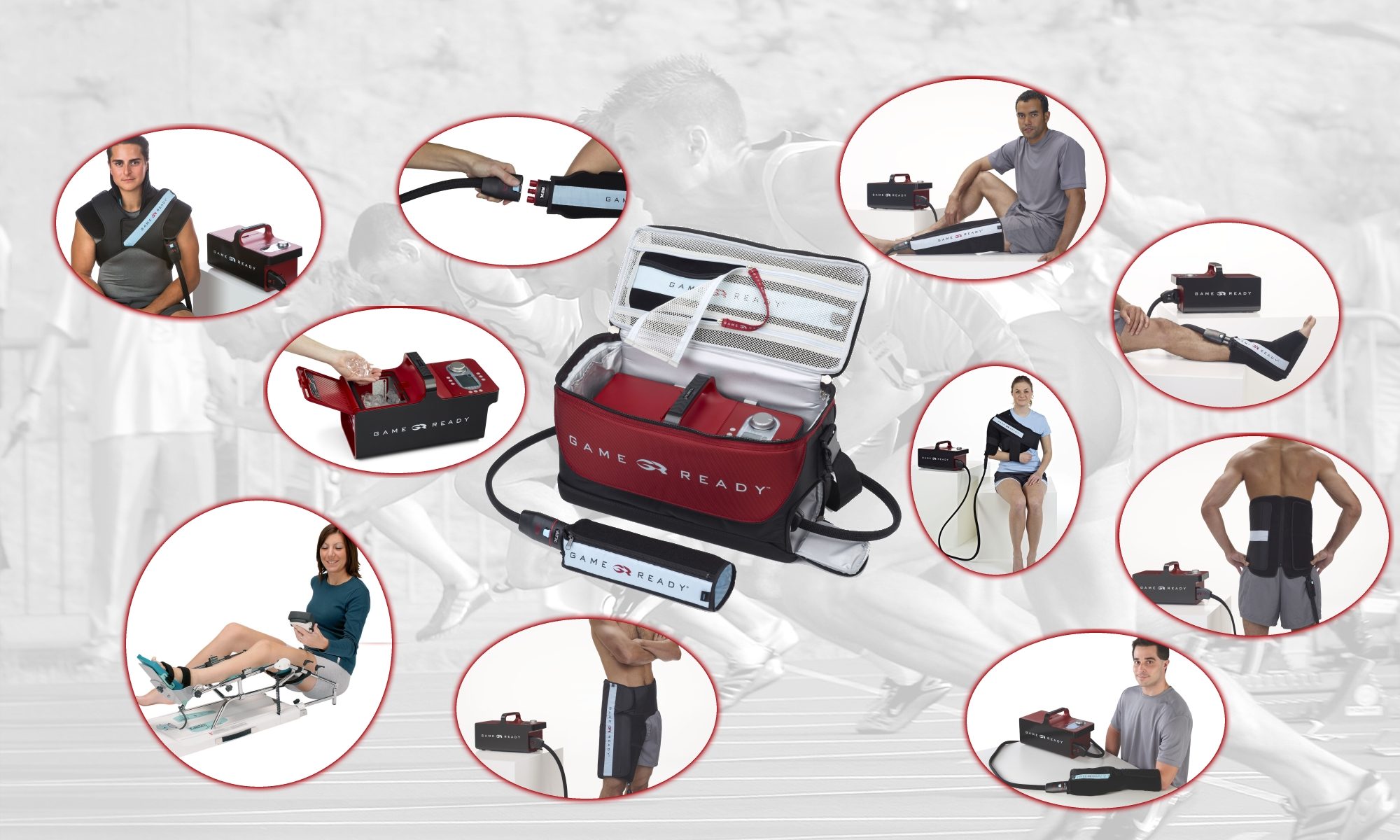
Cryotherapy is a proven treatment for reducing pain, swelling and edema. However applying an ice pack has a limited effect on the healing process. The secret to a good cryotherapy session is controlled cold, full circumferential application and intermittent pressure. Scroll down to find out what this means. Ice packs only provide cold in one spot for a short time, which is ideal for taking the pain away from, say, a knee injury coming off the field. However
not so effective for a speedy recovery.
The best cryotherapy application includes:
Controlled cold. Keep the temperature between 1° and 10°C. It’s important to keep the temperature down as low as possible, but at the same time not to take the skin below 0°C. The temperature should be constant and cycled for about 30min on, 30min off to get the blood flowing while reducing the pain. Ice packs will start below 0°C and quickly heat up to above 10°C and eventually heat up the injury area. An injury area that is swollen will generate a lot of heat so ice packs will need to be changed regularly during one cryotherapy session to maintain an effective temperature. Using a temperature controlled wrap is more effective than using ice packs, achieving a consistent temperature at a controlled level that can be adjusted for comfort and removed/applied easily.
Circumferential Application. Let’s take a look at our knee injury. Ice packs may be the most handy and instant thing to use coming off the field. However the sooner you can get full 360 degree cold around the knee joint, the sooner the pain goes away and swelling reduces. A single ice pack will only partially penetrate the skin in one spot. Applying 4 or 5 ice packs is certainly a handful when you’re in pain, particularly if the swelling is generating heat and you have to change them every 10min. A cold wrap that fully covers the knee (front, sides and back) is the easier and more effective way to get that cold all the way round so it penetrates the knee joint and speeds recovery.
Intermittent Compression. Using compression correctly will control blood flow and lymphatic drainage to reduce swelling. The body’s inflammatory response will send blood to the injury area. This is important for healing, however if you don’t provide a method to get the used blood out again then swelling can start causing pain and eventually have a negative effect. Going back to our knee injury, think how effectively the foot gets blood if the knee is hogging it all. Adding and controlling pressure to a knee joint using ice packs for a consistent 30 minutes is not easy, even with a fitted cuff. Instead, use a good compression wrap that will increase and reduce pressure every 2 minutes for about 30 minutes, then rest and start again. This will do all 3 things; increase blood flow, reduce swelling and increase lymphatic drainage.
If you have Ice Packs in the freezer, and you suffer an injury, they can be great for providing that instant relief. Be sure to swap to a longer term recovery solution as soon as possible to speed up recovery and make it easy. An
Ice and Compression Machine is the most convenient and effective method for doing this. They can be purchased or rented and are ideal for acute injury or surgery recovery.
 Cryotherapy is a proven treatment for reducing pain, swelling and edema. However applying an ice pack has a limited effect on the healing process. The secret to a good cryotherapy session is controlled cold, full circumferential application and intermittent pressure. Scroll down to find out what this means. Ice packs only provide cold in one spot for a short time, which is ideal for taking the pain away from, say, a knee injury coming off the field. However not so effective for a speedy recovery.
Cryotherapy is a proven treatment for reducing pain, swelling and edema. However applying an ice pack has a limited effect on the healing process. The secret to a good cryotherapy session is controlled cold, full circumferential application and intermittent pressure. Scroll down to find out what this means. Ice packs only provide cold in one spot for a short time, which is ideal for taking the pain away from, say, a knee injury coming off the field. However not so effective for a speedy recovery.